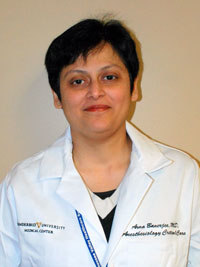Bridging the Gap and Beyond: What's Next in Medical Educationby Arna Banerjee, MD, MMHC, FCCM As the landscape of medical education continues to evolve, educators and learners are being prompted to rethink how we teach, train, and develop. A series of timely discussions will focus on three key areas shaping the future of clinical education: feedback culture, fellowship pathways, and innovation in simulation. The first in the series was a webinar scheduled for August 13, 2025, at 5:00 PM EST with speakers Dr. Emily Teeter and Dr. Ben Cobb from UNC. Bridging the Gap: Enhancing Feedback Culture in Medical Education Feedback is one of the most powerful tools in medical education, yet it is also one of the most misunderstood. Despite its central role in clinical training, feedback is often underused or misinterpreted, causing missed chances for growth and development. In this upcoming webinar, Dr. Emily Teeter and Dr. Ben Cobb from UNC will examine the “feedback gap”—the disconnection between what is communicated and what is received. Based on their extensive backgrounds in anesthesiology and medical education, they will lead participants through the emotional, structural, and cultural obstacles that impede effective feedback. Participants will learn to:
This session is ideal for faculty, residents, and fellows who want to foster a more transparent, growth-oriented learning environment. The others in the series are: Fellowships: A Strategic Decision The decision to pursue a fellowship is becoming more complicated. While fellowships provide opportunities for advanced clinical training, academic growth, and leadership, they also involve trade-offs—longer training periods, financial costs, and postponed entry into independent practice. Upcoming discussions will examine the changing role of fellowships in shaping career paths. Educators and trainees will learn how to evaluate the advantages and disadvantages and align their fellowship choices with long-term career goals. Simulation Innovation: AI and VR in Medical Training Simulation has long been a cornerstone of clinical education, but recent advances in technology are expanding its capabilities. Artificial intelligence tools like ChatGPT are now used to simulate patient interactions, create dynamic case scenarios, and offer real-time feedback. Meanwhile, virtual reality is building immersive environments that mimic high-stakes clinical situations. These innovations are not just improving the way we teach—they’re expanding what’s possible. By incorporating AI and VR into simulations, educators can develop more personalized, scalable, and effective training experiences. Looking Ahead: Annual Meeting Panels in Development The Education Advisory Board (EAB) is already planning a series of exciting panels for the upcoming annual meeting. Although details are still under wraps, the focus will be on innovation, collaboration, and the future of medical education. Expect sessions that challenge conventional thinking and bring together diverse voices from across the academic spectrum. Stay tuned for more updates—and don’t miss the chance to be part of these important conversations. Author
Arna Banerjee, MD, MMHC, FCCM
|


